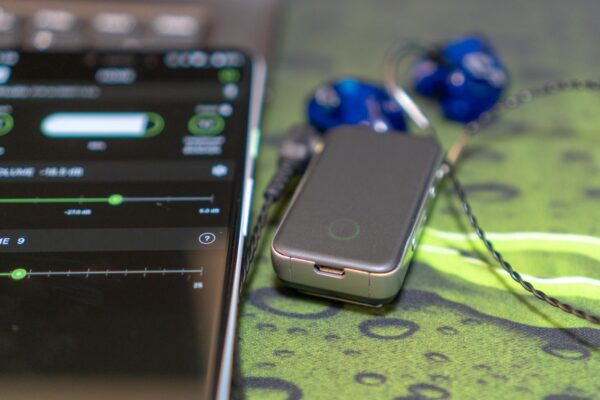
For some of us who prefer to use our wired headphones, the disappearance of 3.5 mm audio jacks from many new smartphones has been a problem. I’ve searched far and wide for a solution, and finally found something that works exceptionally well. This is the Radsone EarStudio ES100 Bluetooth audio receiver.
Most people who get one of the newer smartphones which come without a 3.5 mm audio jack will do what the manufacturers want them to do — get new Bluetooth headphones. If a USB Type-C to 3.5 mm audio adapter is included, a few users will make do with that. Then, some fortunate people will find USB Type-C wired headphones included with their new smartphones, and they are happy to use that.
The USB Type-C adapter is inconvenient to use, and if I wanted to continue using my existing wired headphones, it seems I have to get myself a Bluetooth audio receiver. It sounds simple, but unfortunately, I’ve gone through a bunch of them and come away mostly disappointed. That is, until the Radsone EarStudio ES100.
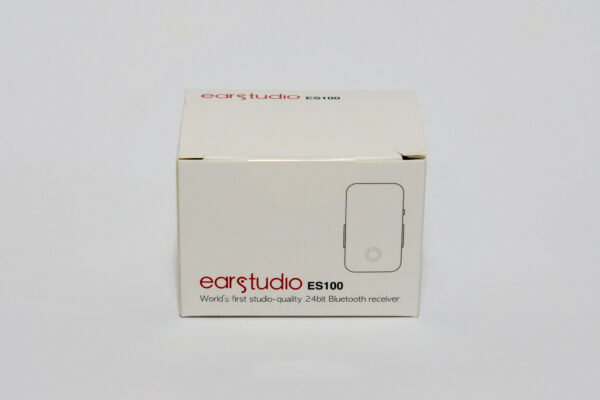
I hadn’t previously known about this brand, so I was apprehensive about their EarStudio ES100. The EarStudio ES100 costs more than other Bluetooth audio receivers I had been testing, though not as much of some other very premium products. I wasn’t sure if that is a good thing or bad thing.
On paper, the EarStudio ES100 has an impressive feature list and specification sheet. This Bluetooth audio receiver supports 24-bit audio with LDAC, aptX, aptX HD, SBC, and AAC codecs. It can also work as a USB DAC. A built-in microphone allows you to use it to take calls. I thought it should be worth checking out.
The EarStudio ES100’s plastic body measures 52 x 31 x 12 mm and weighs 20 grams. It’s considered small, though certainly not amongst the smallest, and I do prefer for it to be flatter. Those body dimensions exclude the clip on the back. The clip itself seems to be made of metal. You can easily attach the EarStudio ES100 to your clothing.
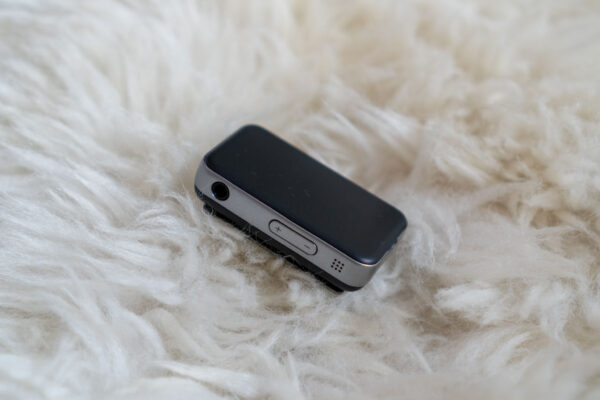
Quite unusually, you’ll both a 3.5 mm audio jack and 2.5 mm audio jack on the EarStudio ES100. They are both for audio output. The difference is that the former is used for unbalanced signal, the regular kind you would probably be needing for your headphones. The latter is for a balanced signal, and perhaps a hint that the ES100 is quite a “pro” device. If you don’t know what or how the balanced signal is used, you probably don’t need it.
The regular 3.5 mm audio jack is on the left side of the EarStudio ES100, along with the volume rocker and built-in microphone. This volume rocker is an analog volume control. This is different from the digital volume level which you control at the source. Most other Bluetooth audio receivers has only one volume control, the one on the gadget itself controls the same digital audio volume.
The separate volume control setup on the EarStudio ES100 means that you can have the digital volume pushed up, then adjust the analog volume level for optimal audio performance.
The balanced 2.5 mm audio jack on the left side of the EarStudio ES100 is accompanied by the track backward/forward controls and a play/pause button.
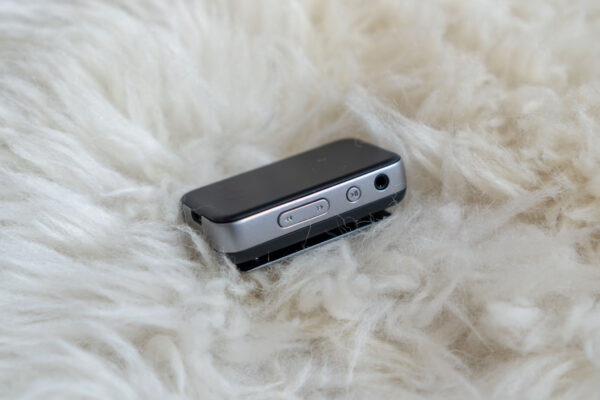
It’s important to have physical controls, but I don’t like how they are designed on the EarStudio ES100. The buttons on the ES100 are small, plastickly, and hard to feel and tell apart without looking at them. There’s also little tactile feedback to know when you’ve activated them. On the other hand, it’s good that these buttons are not easy to accidentally activate, a problem which I had with one other Bluetooth audio receiver.
A LED ring on the front of the EarStudio ES100 provides various status indications. It is multi-coloured, with blue, red, green, and white. In normal use with a Bluetooth connection, you’ll just see the LED briefly flash in blue every couple of seconds.
In Bluetooth mode, the EarStudio ES100 supports 24-bit audio with SBC, AAC, aptX, aptX HD, and LDAC codecs. I’m happy to see several modern codecs like aptX, aptX HD and LDAC supported, but a little disappointed that aptX Low Latency wasn’t specifically listed. Fortunately, when testing using LDAC with my Pixel 3 XL, I found no discernible latency. It’s good to know that the enjoyment of movies won’t be impaired by audio-sync issues.
The MicroUSB port at the bottom of the EarStudio ES100 is used for charging, as well as turning it into a USB DAC, functioning as a USB Audio Class 1.0 interface when you connect it to a computer. It is plug-and-play, no drivers needed, and the ES100 supports 48 kHz 16-bit audio. 24-bit audio is supported in macOS only.
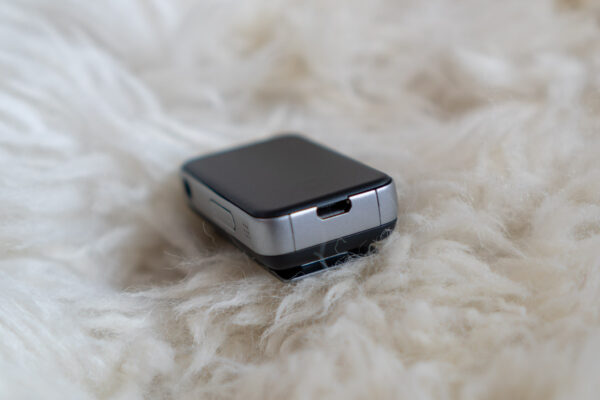
I really like the fact that the EarStudio ES100 can be both a Bluetooth audio receiver and a USB DAC. This means I can easily transition from a wireless smartphone connection to a wired desktop connection, without having to reconnect my headphones, and be able to recharge the ES100 at the same time. Furthermore, I will hear the same sound signature, since the hardware producing the analog audio signal is the same.
I’m really pleased with the sound quality on the EarStudio ES100. The ES100 sounds wonderful, and I have absolutely no complaints. I tested only the 3.5 mm unbalanced audio output using my JH16 custom in-ear monitors. This is the best Bluetooth audio receiver I’ve heard. Most importantly, there is no discernible background noise or hiss at any volume level and in any mode, a common problem I had with other Bluetooth audio receivers.
Under the hood, the EarStudio ES100 has two AK4375a DAC/AMP chips from Asahi Kasei providing plenty of driving power. Radsone provides the output specifications as follows:
- Output RMS power: 3.5 mm unbalanced at 1.1 V, 2.5 mm balanced at 2.2. V
- SNR (1 kHz, 20 kHz AES17): 3.5 mm unbalanced 109 db (+2.8 dBu), 2.5 mm balanced 110 dB (+8.8 dBu)
- THD+N (1 kHz, 20 kHz AES17): 3.5 mm unbalanced 0.0022%, 2.5 mm balanced 0.0014%
- Output impedance: 0.5 – 1 ohm
The built-in battery is rated for 14 hours.
A feature of the EarStudio ES100 surprisingly not highlighted by Radsone is Ambient Sound mode. The microphones on the ES100 pick up environmental sounds and mixes that into the audio fed into the headphones, enabling you to hear your environment even if your headphones are somewhat sound isolating. This is very useful when you need to hear sounds around you, or be able to speak with a colleague without having to take off your headphones.
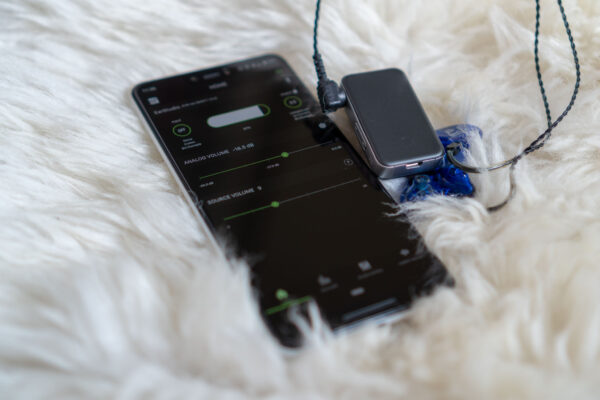
The EarStudio companion app on Android and iOS is packed with plenty of features, and it also shows you more of what the ES100 is capable that isn’t obvious from looking at the physical hardware itself.
Apart from the usual equaliser settings, the app allows you to configure output impedance, jitter reduction, filters, and oversampling rate. There are firmware updates for the EarStudio ES100 too, and I had an update applied during my testing.
There is so much more to cover in the companion app that it deserves a separate post on its own. I’ll have this follow-up post written up in the next fortnight.
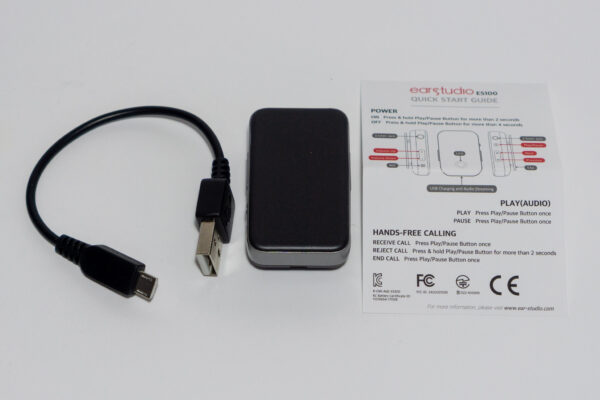
The EarStudio ES100 retail packaging includes just one short Micro-USB cable, and a brief instruction sheet to get you started.
I don’t consider myself an audiophile, but I can be quite discerning and picky with what I hear. The Radsone EarStudio ES100 is the best Bluetooth audio receiver I’ve tested to date, and I’m happy to recommend it to any discerning listener who’s looking to Bluetooth-enable their wired headphones.
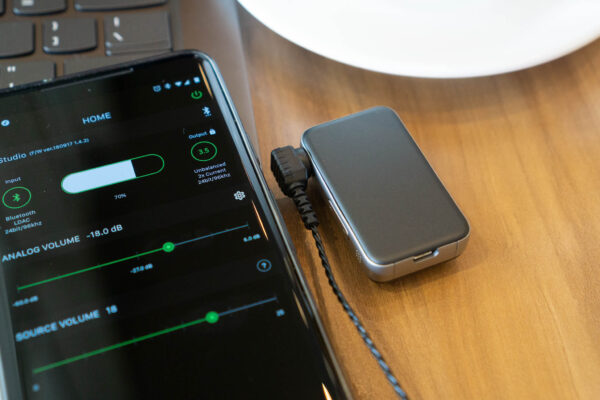
The Radsone EarStudio ES100 retails at US$99, and is available from Amazon (affiliate link). Amazon (US) ships this item to Singapore, Hong Kong, Indonesia, Malaysia, Taiwan, Philippines, Thailand, Vietnam, Australia and New Zealand. EU residents can also order from Amazon UK.
A quick word on Radsone: They are a relatively young company, founded in 2011, and based in South Korea. Radsone describes themselves as a full stack audio company. They’ve developed a number of technologies which are used in several big name products, including those from Qualcomm, Audio-Technica, LG, and Astell & Kern. The EarStudio ES100 is their first consumer hardware product.
Conclusion
The Radsone EarStudio ES100’s sound quality, features, and capabilities make it easy to recommend to any discerning listener who needs to Bluetooth-enable their wired headphones.
Pros:
- Bluetooth audio receiver and USB DAC
- Both 3.5 mm unbalanced and 2.5 mm balanced output
- Advanced codecs like aptX, aptX HD, and LDAC
- No hiss, no noise
- Both digital and analog volume controls
Cons:
- Plastic build
- Physical controls hard to use
RMS power is not measured in volts though, it’s measured in watts and usually specified for one or more headphone impedances.